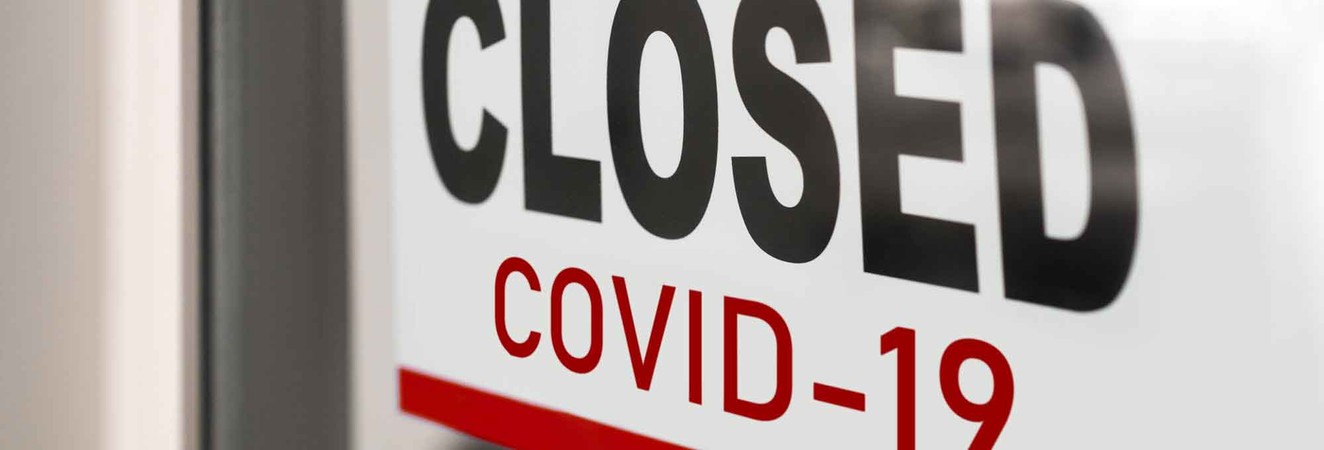Whether you’ve been laid off, furloughed from your job, are working from home or are considered an essential worker and need to keep on with “business as usual,” millions of Americans’ jobs and lives have been upended since the coronavirus outbreak began in mid-March.[0]
The resulting job loss and unemployment rate is the most significant since September 1945, when the U.S. hit its previous unemployment rate of 1.96 million.[1]
As of the beginning of May 2020, the U.S. was sitting at a 14.7% unemployment rate (up from 4.4% in March 2020), with the loss of 20.5 million additional jobs in April.[2]
However, according to the U.S. Department of Labor, the rate may be closer to 20% due to incorrect classification in the survey.[3]
These are very challenging and uncertain times, both from a health and economic standpoint. The remainder of this blog post discusses some basic steps you may want to take to access financial and healthcare resources if you’ve recently been laid off from your job or think you may be laid off soon.
Step 1: Obtain Earned Income + Benefits From Your Employer
The first step after you’ve been notified of your termination is to ensure you’re receiving the compensation and benefits you’ve earned. As difficult as it may be, it’s important to be fully engaged in the exit process (if there is one), to ask questions and get clear answers (often in writing), and to advocate for yourself professionally but firmly if necessary.
Employer benefits
Review your employee handbook and employment contract to make sure you’re clear about your eligibility for earned benefits and/or a severance package.
Don’t forget to consider your paid time off, health savings account (HSA), and 401K or other retirement plan in addition to any expenses you should be reimbursed for, commissions or bonuses that may be part of your compensation package.[4]
If you were enrolled in your employer’s group health insurance plan, validate the end date of your current coverage and determine if you want to continue that coverage with COBRA (we’ll talk about other options below).
If you didn’t receive benefits from your employer then you still need to make sure you receive your final paycheck.
Your final paycheck
Make sure you understand what your final paycheck will include and what that amount will be. It’s also a good idea to get this information documented in writing, particularly if there will be a delay from the time you’re terminated until you receive your final paycheck or automatic deposit.
Know who your contact will be at the company (e.g., a human resources representative) should you have problems or questions regarding your final paycheck when you receive it.
Depending on the nature of your job or your employer, you may want to request your final paycheck prior to leaving your job, especially if your final pay period is a few weeks away or you have any concerns about your employer’s ability to pay you later on.
Step 2: Secure Unemployment Benefits
If you’ve lost your job or had your work hours reduced through no fault of your own, for example, because your company is downsizing, and have met your state’s requirements, then you may have a legal right to receive unemployment benefits.[5]
You may not be eligible to collect unemployment if you voluntarily left your job, were terminated for violating company policy[6] or if you don’t meet your state’s eligibility requirements.[7]
Here are the steps to take to apply for unemployment benefits:
Obtain written confirmation from your employer indicating that they believe you are eligible for unemployment benefits and will not contest your application.[8]
Though not required to apply for unemployment benefits, obtaining documentation that includes the dates you were employed and reason for your termination (through no fault of your own) may provide a layer of protection when it comes to securing unemployment benefits should your employer decide to contest your eligibility later. It can also be helpful if you need to provide references for your next job.[9]
Understand your state’s unemployment eligibility requirements and process. Performing a web search for “unemployment eligibility [your state name]” should return your state’s office of employment and/or economic development page in the search results.
Review that page to understand if you’re considered eligible by your state, the process for claiming benefits, and also to estimate your benefit amount.
Apply as soon as you’re eligible. Don’t wait. It takes time to process your unemployment benefits claim and under normal circumstances, it typically takes a couple of weeks for the first payment to hit your bank account. Many states are seeing record high applications right now, which means it may take even longer to process and receive your payment.
Step 3: Get Health Insurance
When you’re between jobs and trying to save money it can be tempting to eliminate health insurance. After all, for many of us that’s a sizable payment each month. In 2020 the average unsubsidized ACA Marketplace benchmark plan monthly premium was $462.[10]
But healthcare in the U.S. is expensive, especially if you require hospitalization: $2,517 average cost per day in 2018.[11] And emergency care generally costs $538 to $1,679 or more for a moderate health problem.[12]
It’s important to carefully consider your coverage options and your likelihood of needing high-cost healthcare services, then decide if you should maintain some form of health coverage while you’re temporarily unemployed.
Here are your main options for health insurance if you’re laid off.
COBRA
If you had health insurance through your former employer, under COBRA you may be able to temporarily continue that coverage by paying the full premium amount plus a 2% administrative charge.[13] One of the main benefits of this option is continuity of care – your plan stays the same so you don’t have to find a new doctor or hospital.
One of the drawbacks is cost. This can be an expensive option since you’re now responsible for your share of the premium, the share your employer was paying, and an additional 2% on top of that.
Learn more about COBRA coverage: The US Department of Labor’s Employee’s Guide to Health Insurance Under COBRA (PDF).
ACA Health Insurance
If you lost employer-sponsored health coverage due to being laid off, you may qualify to enroll in an Affordable Care Act (ACA) qualifying health plan through Healthcare.gov or your state’s exchange.
Learn all about qualifying life events for a special enrollment period.
These are comprehensive plans that include coverage for the essential health benefits and you cannot be charged more or denied coverage if you have pre existing conditions. You may also be eligible for subsidies to help reduce your monthly premium cost.
You can begin the process at Healthcare.gov, where you can also validate if you qualify for subsidies or other ACA-qualifying coverage like Medicaid or CHIP.
Non-ACA Health Insurance
There are also non-ACA health insurance options available to those who qualify. These plans tend to have lower monthly premiums than unsubsidized ACA plans[14] and you can enroll in them outside of the open enrollment or special enrollment periods that apply to ACA plans.
The tradeoff is that they have more restrictions, may exclude coverage for pre existing conditions, may not cover essential health benefits, may be subject to medical underwriting and they’re not available in all states.
Let’s briefly look at two non-ACA health insurance options.
Short Term Medical Insurance is a form of temporary health insurance for when you’re between employer health plans. These plans are more limited than ACA plans in terms of what they cover and their benefit amounts, but monthly premiums also tend to be lower as a result.[15]
For some, they are a good option to avoid going without any coverage at all and having to pay for unplanned medical care fully out of pocket. Learn more about short term health insurance.
Get a quote to find out if plans are available in your area and how much they cost.
Get a Short Term Health Insurance Quote
Hospital Indemnity Plans can either be used as supplemental benefits to an ACA-qualifying major medical plan or, in some states, as a non-ACA qualifying limited-benefit stand-alone health plan.
Hospital plans are designed to provide benefits associated with inpatient hospitalization, but some also offer benefits for preventive care visits, emergency room services, and urgent care as well.
Learn more about hospital indemnity insurance and health insurance options if you’re unemployed.
Request a quote and view plan options to learn more about what they cover.
Get a Hospital Insurance Quote
Step 4: Know Your Healthcare Options
If you decide to forego health insurance for now, make sure you know what healthcare options may be affordable and available to you without insurance such as retail walk-in clinics, community clinics, and urgent care centers.
Telemedicine may be another good option in certain circumstances for cost savings and social distancing. For example, if you’re otherwise healthy or live in a rural area with fewer in-person healthcare providers nearby. Telemedicine is not insurance. Learn more about the pros and cons of telemedicine.
See Telemedicine Plan Costs and Options.
Summary + Next Steps
Updating your LinkedIn profile, alerting your professional network and applying for jobs are all important steps to find a new job after you’ve been laid off.
But first it’s important to secure your finances and health coverage by:
-
- Getting the full compensation (pay + benefits) that you have earned
- Enrolling in unemployment benefits
- Obtaining health insurance coverage and/or
- Identifying lower-cost healthcare options
We can help with the health insurance piece. If you’d like to speak to an agent about your health insurance options, call (888) 855-6837 or start with a quote (it just takes a minute to see your options).



